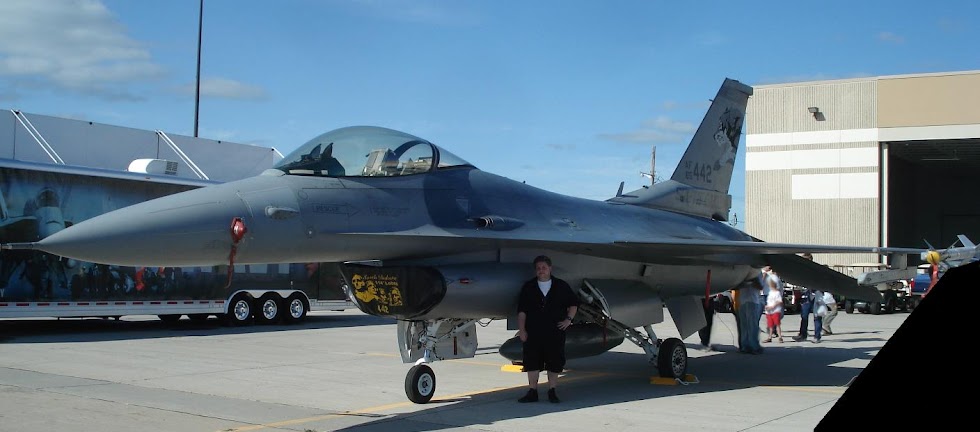As the world's air forces struggle to get 5th generation fighters operational, it is interesting to see how 4th generation fighters are still growing into their capabilities [1]. It is a testament to their excellent design that after 45 years these machines have yet to enter into their final phases of development and will continue to see frontline service for decades. In American use, this will mean being regulated to supplement the fifth generation ones, but the still have a powerful role to play (beyond filling the majority of the numbers needed to keep the force capable of its goals).
One major element of these designs is increased ordnance, to the point only formerly envisioned in video games, The latest in F-16 design is the block 70. Along with new radar and F-22 "DNA" in the avionics (as well as CFTs and other block 60 additions), new weapon launchers including a triple AAM rack multiply the effectiveness. The design of the block 70 has a 10 AAM loadout (and with the emphasis on loading the inner pylons could theoretically get to 16 missiles, the same as the iF-16 game had back in the 90s). The US Air Force has not purchased an F-16 since 2001 although it now plans to retain the type until the 2040s. This latest design might be the best way for the Air Force to upgrade its fleet by incorporating the last 15 years of additions that have gone to foreign customers.
As for the F-15, which is on shakier ground with the Air Force and may be retired sooner than the F-16, there are still plenty of new upgraded designs. The first is the F-15SA, already sold to Saudi Arabia. It is already flying with outer pylons under the wings, originally developed in the 1970s but deleted from delivered models, now upgraded to dual launchers. This increases the missile load to 12. The F-15 2040 concept adds another dual AAM launcher on the inner pylon as well as doubling each fuselage launcher, bringing the missile load up 16, and along with the new outer pylon brings it up to 20. The latest version, the F-15X - with the new AMBER racks, the F-15 can carry 20 AAMS (or 22 or 24 depending on the report) or the standard 8 AAMS AND 28 SDBs, adding ground attack to the former Air-Superiority only fighter (as well as other air to ground ordnance on the outer wing pylons). In the air superiority role, the F-22s would maintain dominance while remaining undetected (along with F-35s in a more limited capacity), as the new F-15 would provide a heavy load of ordnance. Given the proven (and undefeated) history of the Eagle and its excellent performance envelope, this is a far better idea for maintaining air superiority with small numbers of cutting-edge fighters than previous ideas like the B-1R, a AAM-loaded bomber.
Furthermore, there is the case of the F-18XT, with CFTs and stealthy weapons pos. The Trump administration has pushed to buy these in order to cut costs of fifth-generation programs. It will be interesting to see if this amounts to anything. But, clearly fourth generation still has value as three out of four air-frame types continue to evolve.
[1] Although the F-35 is now going operational, it has been a long and difficult road which may not meet capability requirements for a long time. And that, best case, scenario is only in the west. As for challengers, in Russia it looks like the SU-57 will not go forward in production, or at least for quite a long time.
Saturday, July 28, 2018
Subscribe to:
Posts (Atom)

